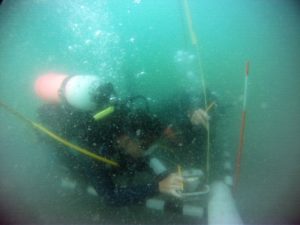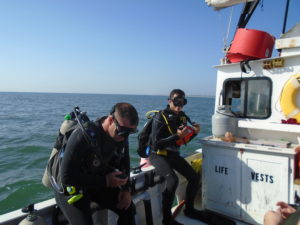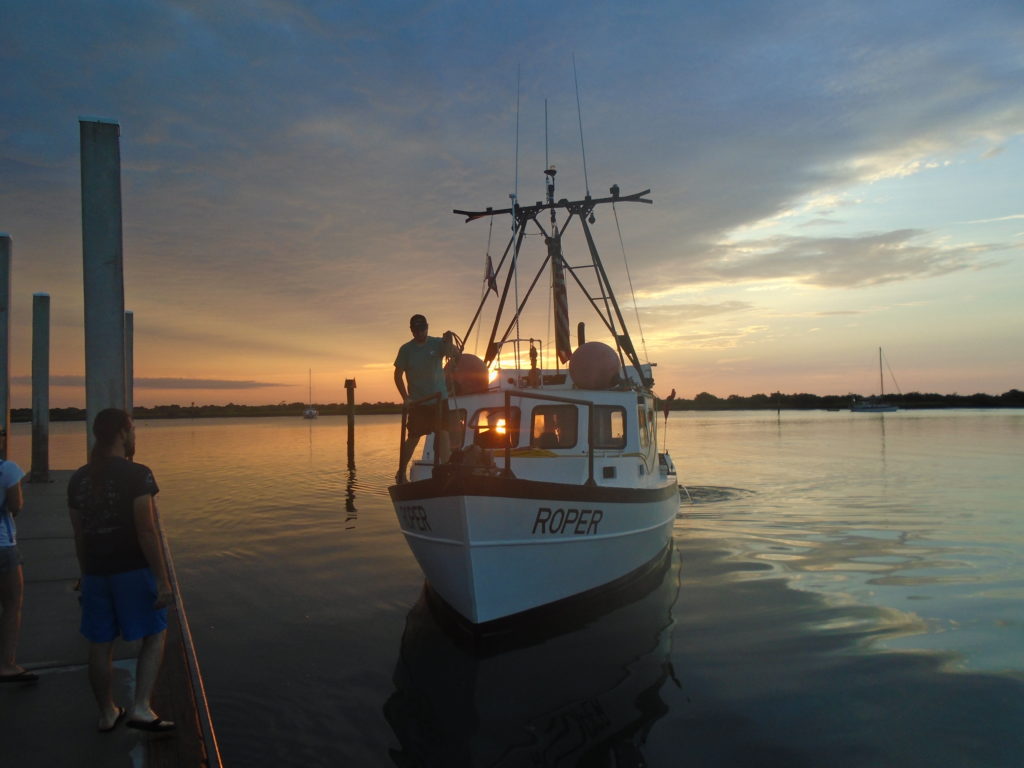From St. Augustine Beach, especially north of the pier, there is a persistent speck on the horizon. The speck appears from the inlet with the rising sun. Turning south and growing bigger on the horizon, the speck becomes a boat, plunging into the morning swell. Aboard is our research team.
450 years of maritime history live in these waters.
As you may well know, the St. Augustine Lighthouse & Maritime Museum houses a maritime research division. Comprised of archaeologists and historians, our goal is to bring our mission statement to life in the most tangible and exciting way that we can.
For over 20 years, the museum has studied the Atlantic coastline, which we know of as the ‘First Coast.’ We have surveyed the ocean, dived it, probed it, sampled it, drawn, photographed, measured, and dug into it.
Unlike treasure hunters, who seek riches and glitter, we look for something much more valuable, the intact story of a shipwreck.
I have never known the sinking of a ship to occur without emotion, often with loss of life, always with loss of belongings. The stories of people go down with them, often hidden in Poseidon’s strongbox for centuries.
 St. Augustine participated in the Atlantic world just as vigorously as any other port. No matter its size never increased to the proportions of a modern major city, St. Augustine’s role in Spanish and British empire required a constant shipping presence to ensure its healthy presence.
St. Augustine participated in the Atlantic world just as vigorously as any other port. No matter its size never increased to the proportions of a modern major city, St. Augustine’s role in Spanish and British empire required a constant shipping presence to ensure its healthy presence.
There was only one small hitch, getting in and out of town was the most dangerous part of the trip. A shifting sandbar, combined with very shallow water, made approaching under sail power alone an often dangerous proposition.
In 450 years, dozens of ships piled onto the bar, or as it was so eloquently said in history ‘came to grief.’
Our job is to find those missing links in history, to unlock their stories.
Beginning the search for a new piece of the past.
This summer, after excavations were completed for the season on the Storm Wreck, a 1782 shipwreck of the American Revolution, we went back to sea with a new goal, to find more wrecks. Using some old, and some new survey data, a target list was created to create a prioritized set of places to test.
Keep in mind, most shipwrecks are completely buried in this region, especially those close in to the coast. Target testing can be an arduous set of tasks, often culminating in the discovery of modern debris.
Using technology to discover the secrets of the sea.
To test a target, we create a magnetic map of the seabed from survey data gathered with a marine magnetometer. This map shows us where iron-rich magnetic deviations exist in the earth’s magnetic field. Sometimes, based on the signature, they represent a shipwreck site. In order to prove this though, we have to dig down to the source of the magnetism to find out what the source is. Sometimes old, sometimes new.
 This summer, we have tested numerous targets and have had a great amount of success with both people, equipment, and luck. First, we are very fortunate to work with a dedicated team here at the lighthouse, a great crop of new students ready to become fellow scholars, and, of course, the volunteers who are invaluable and really a part of our research family.
This summer, we have tested numerous targets and have had a great amount of success with both people, equipment, and luck. First, we are very fortunate to work with a dedicated team here at the lighthouse, a great crop of new students ready to become fellow scholars, and, of course, the volunteers who are invaluable and really a part of our research family.
They dive in murky water with us, brave offshore storms, help wash the boat at the end of the day, and give tours ashore so the dive team can continue working. We will continue target testing through the end of August and will have some exciting news to share.
But for now, as my old professors once told me when I had a question ‘you need to dig more’. And so we will.
Stay tuned and hold fast!
Brendan Burke joined the St. Augustine Lighthouse & Maritime Museum in 2007 as an archaeologist for the Lighthouse Archaeological Maritime Program. He holds a graduate degree in Anthropology from the College of William & Mary.


